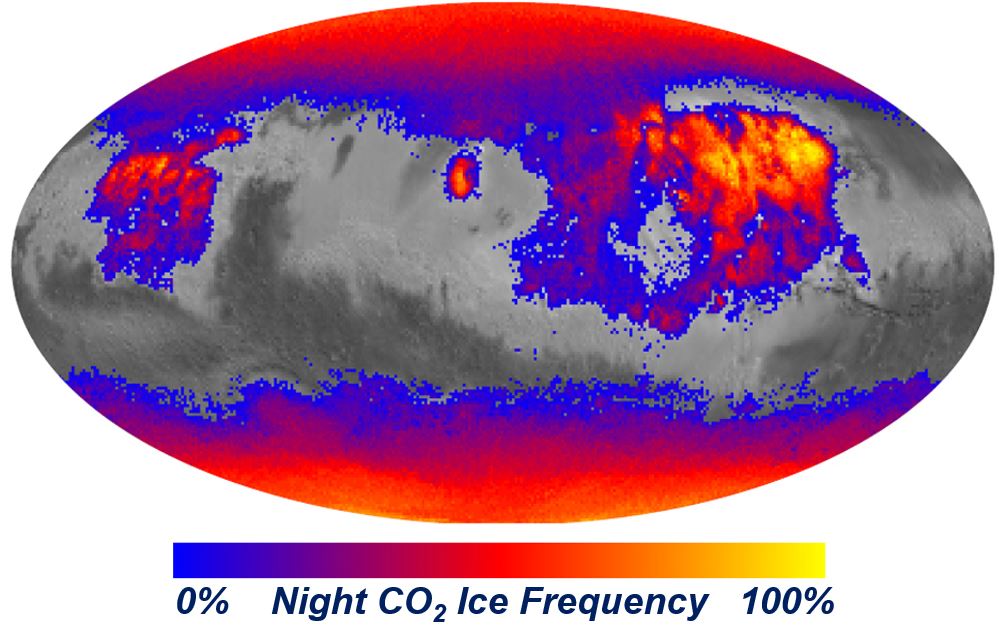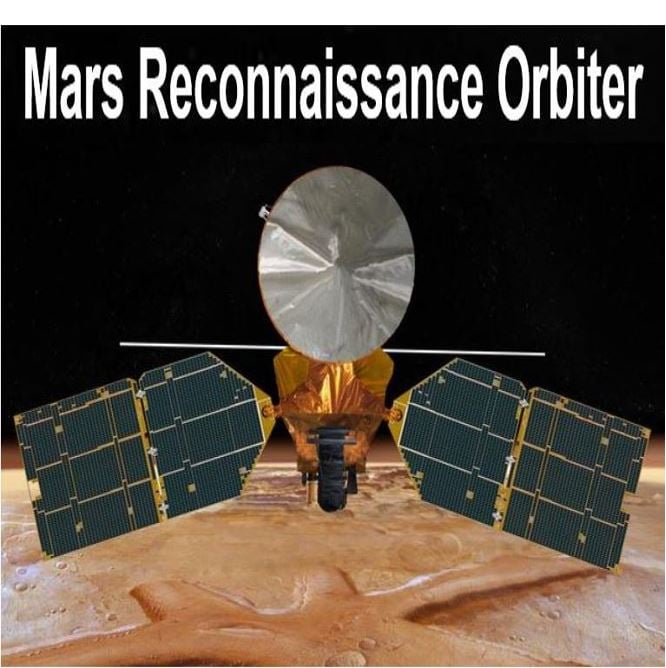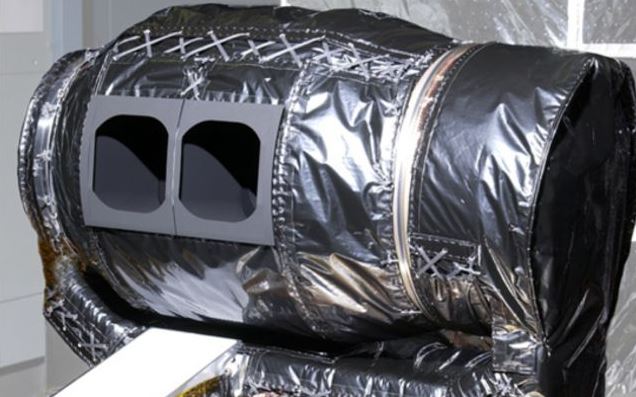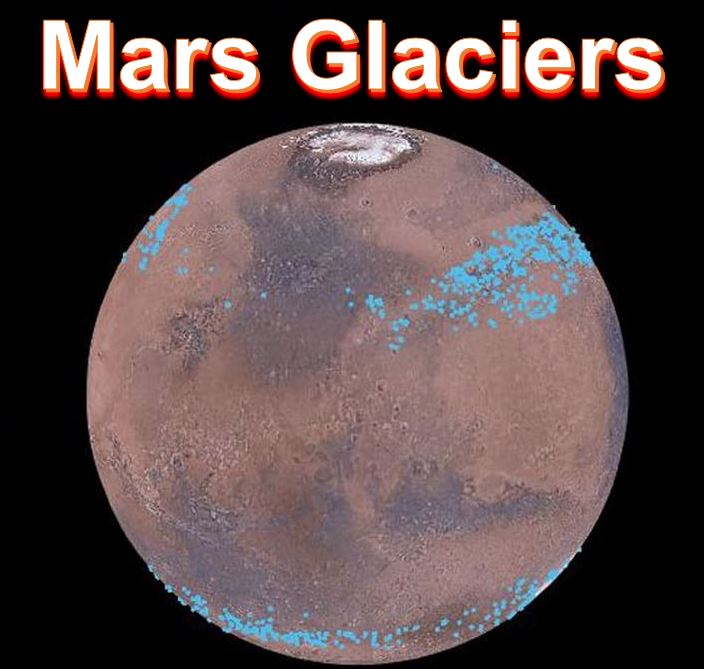Nasa’s Mars Reconnaissance Orbiter has made a carbon dioxide discovery regarding the Red Planet’s atmosphere and surface that is fascinating planetary scientists across the world. We now know that carbon dioxide (CO2) ice covers the Martian ground at night in some mid-latitude regions more frequently than in its polar regions, where it is mainly absent for a large part of the summer and autumn.
Some of Mars’ dusty parts get as cold at night year-round as its poles do during the winter, even regions quite close to the equator in summer, according to the Mars Reconnaissance Orbiter’s (MRO’s) new findings.
 A map showing the frequency of CO2 frost’s presence at sunrise on Mars, as a percentage of days year-round. CO2 ice more frequently covers the ground at night in some mid-latitude areas than in polar regions. (Image: nasa.gov. Credits: NASA/JPS-Caltech)
A map showing the frequency of CO2 frost’s presence at sunrise on Mars, as a percentage of days year-round. CO2 ice more frequently covers the ground at night in some mid-latitude areas than in polar regions. (Image: nasa.gov. Credits: NASA/JPS-Caltech)
Mars semi-equatorial regions very cold
Temperatures drop so low in these regions overnight that an extremely thin layer of CO2 frost appears to form. In the morning this frost then vaporises.
The dust that covers these regions has a low heat-holding capacity, which means that the daily temperature swings are large. Daily volatilisation of frost crystals that form on the dust grains may help give the dust a fluffy appearance, and so sustain this deep overnight chill.
Mars’ atmosphere’s main ingredient is CO2. There are also large reserves of frozen carbon dioxide in the polar ice caps.
 An artist’s impression of the Mars Reconnaissance Orbiter, with the spacecraft’s main bus facing down, toward the red planet. (Image: mars.nasa.gov)
An artist’s impression of the Mars Reconnaissance Orbiter, with the spacecraft’s main bus facing down, toward the red planet. (Image: mars.nasa.gov)
Planetary scientists have been studying the seasonal accumulation and thawing of CO2 at high latitudes on the Red Planet. The pattern has been linked to strange phenomena including the groove-cutting ice sleds and geyser-like eruptions.
Guy Webster, from NASA’s Jet Propulsion Laboratory in Pasadena, California, wrote:
“Here’s what’s new knowledge: the presence and extent of transient overnight carbon dioxide frosts, even at middle and low latitudes. Infrared-wavelength observations of dust-covered regions by the Mars Climate Sounder instrument on NASA’s Mars Reconnaisance Orbiter not only indicate cold-enough nighttime surface temperatures for carbon dioxide frost to form, they also detect a spectrum signature at night consistent with a trace of frost.”
Lead author of a report published in the Journal of Geophysical Research – Planets (citation below), Sylvain Piqueux, also of NASA’s Jet Propulsion Laboratory in Pasadena, said:
“The temperature gets so low, you start freezing the atmosphere onto the surface. Once you reach that temperature, you don’t get colder, you just accumulate more frost.”
“So even on the polar caps, the surface temperature isn’t any colder than what these lower-latitude regions get to overnight.”
Dusty regions have wide temperature fluctuations
Elysium, Arabia and Tharsis, three middle-and-low-latitude regions of Mars, have night-time temperatures cold enough for year-round or almost year-round CO2 frost.
Each of these three regions is larger than the US state of Texas. They are all dust-covered to the extent that surface temperatures change much more rapidly than in areas with exposed-bedrock surfaces.
Dr. Piqueux said:
“These same regions that are coldest at night are the warmest during the day. It has to do with the nature of the material — it’s so fluffy. Think of when you’re at the beach on a summer afternoon, where you step on the fine grain sand.”
“You almost burn your foot, it’s so hot at the surface, but just below the surface it’s not as hot, and if you touch a boulder, it doesn’t feel as hot. Then it’s the opposite at night: The surface of the sand cools off quickly, while the boulder stays warm.”
 Image captured by the High Resolution Imaging Science Experiment camera on NASA’s Mars Reconnaissance Orbiter, shows frost in gully alcoves in a crater on the Northern plains. The frost is carbon dioxide (dry ice), which appears to cause surface activity , including flows in gullies. (Image: nasa.gov)
Image captured by the High Resolution Imaging Science Experiment camera on NASA’s Mars Reconnaissance Orbiter, shows frost in gully alcoves in a crater on the Northern plains. The frost is carbon dioxide (dry ice), which appears to cause surface activity , including flows in gullies. (Image: nasa.gov)
Unlike Mars’ polar regions, at lower latitudes the atmosphere’s temperature is higher than the ground’s at night. A key step in understanding exactly how cold the ground in these regions gets at night was correcting observations of the Red Planet’s surface for slightly warmer atmospheric temperatures.
From orbit, temperatures are determined by analysing the infrared radiation that is observed at the top of the atmosphere – including radiation from both the ground and the atmosphere.
The Mars Climate Sounder instrument
The Mars Climate Sounder instrument – which observes the temperature, humidity, and dust content of the Martian atmosphere and ‘sees’ in nine channels across the visible infrared ranges of the electromagnetic spectrum – by observing both sideways towards the horizon from orbit as well as downward, can record infrared emissions from a cross-section of the atmosphere, as well as from the Red Planet’s surface. Analysis then reveals the real, i.e. colder, atmosphere.
As the Mars Climate Sounder can read at multiple infrared wavelengths, its findings show that there are microscopic-scale CO2 frost crystals forming a thin layer, no thicker than a few sheets of writing paper.
 The Mars Climate Sounder instrument, shown here prior to its installation onto NASA’s Mars Reconnaissance Orbiter. (Image: mars.nasa.gov)
The Mars Climate Sounder instrument, shown here prior to its installation onto NASA’s Mars Reconnaissance Orbiter. (Image: mars.nasa.gov)
Dr. Piqueux said:
“If at night you form little frost crystals between the grains of dust on the surface, pushing the grains apart, then the frost crystal becomes a little puff of air in the morning, that might be helping to maintain the fluffiness of the surface.”
“You prevent the cementation of grains, the locking together of grains into a more consolidated surface. It’s a self-maintaining process: Where you keep the soil fluffy, you maintain the conditions to form frost at night.”
Rich Zurek, JPL’s chief Mars scientist, said:
“A cycle of carbon dioxide frost that happens every night could be related to other active processes on Mars. This agitation of the soil would affect surface physical properties and could have implications for erosive processes and for the exchange of water vapor between the atmosphere and surface.”
There are many streaks on Martian slopes that appear to be slides of dry material – there is no liquid involved. Carbon dioxide thaws directly into gas, which has a lubrication effect that scientists believe is linked to such slides where winter frost thaws in spring. Daily frost cycles, they believe, may have similar effects.
Recurring slope lineae (RSL) is another type of slope activity on Mars. They appear as dark streaks that advance downhill in a warm season, then fade away, and then appear again during the next warm season.
Mars’ surface likely to have liquid water
Scientists have confirmed the presence of hydrated salt at some of these sites, which suggests there is likely to be liquid water on the surface of the Red Planet today.
 Last year, NASA announced that Mars has frozen water within its polar ice caps, and also in glaciers in its northern and southern hemispheres (blue dots) underneath the dust. (Credit: Mars Digital Image Model, NASA/Nanna Karlsson)
Last year, NASA announced that Mars has frozen water within its polar ice caps, and also in glaciers in its northern and southern hemispheres (blue dots) underneath the dust. (Credit: Mars Digital Image Model, NASA/Nanna Karlsson)
Dr. Zurek said:
“Although RSL appear to start on steep, rocky slopes, the realization that overnight carbon dioxide frosts occur even during warm seasons adds another factor to be considered in RSL activity.”
The scientific instruments on the Mars Reconnaissance Orbiter have been examining the Red Planet since 2006. The Jet Propulsion Laboratory, a division of Caltech (California Institute of Technology) in Pasadena, manages the mission for NASA’s Science Mission Directorate in Washington – it built the Mars Climate Sounder. The orbiter was built by Lockheed Martin Space Systems, which also supports its operations.
Citation: “Discovery of a widespread low-latitude diurnal CO2 frost cycle on Mars,” Sylvain Piqueux, Armin Kleinböhl, Paul O. Hayne, Nicholas G. Heavens, David M. Kass, Daniel J. McCleese, John T. Schofield & James H. Shirley. Journal of Geophysical Research – Planets. 5 July 2016. DOI: 10.1002/2016JE005034.
Video – Mars Reconnaissance Orbiter
NASA’s Mars Reconnaissance Orbiter has sent more data back to Earth than all its other Red Planet equipment combined.
